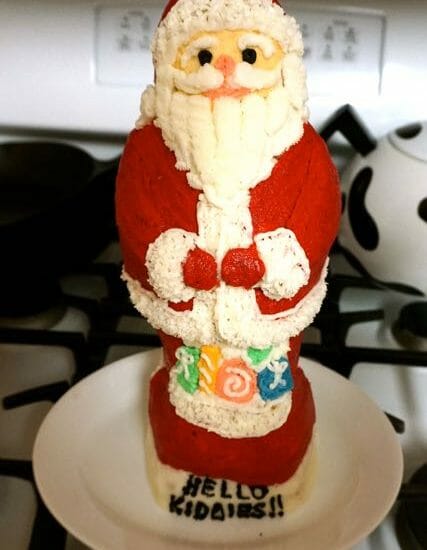
You are at a flea market and come across a vintage cast iron Santa cake mold. The mold features Santa holding a bag and is marked with “Griswold Mfg. Co. Erie, PA 897 and 898.” Additionally, it has “HELLO KIDDIES” printed at the base. The seller is asking $100.
Should you buy it?
If the mold is authentic, this is a great deal. However, if it is a reproduction, it is not worth the price.
It’s important to know that the Griswold Santa cast iron cake mold was widely reproduced.
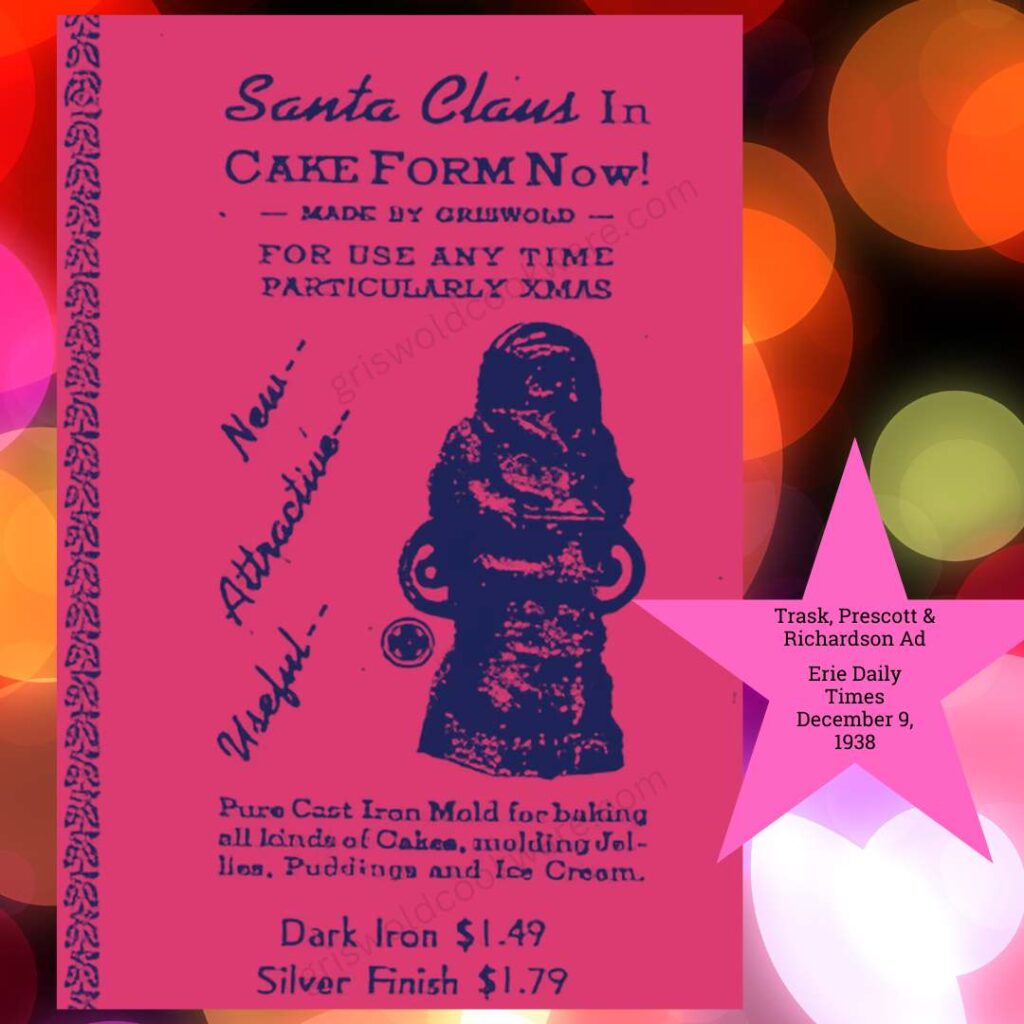

“Tells” for an Authentic and Reproduction Vintage Cast Iron Griswold Cake Mold
There are a few “tells” to determine whether a vintage cast iron Santa cake mold marked “Griswold” is authentic or a reproduction.1
Casting Quality
The casting quality is most obvious. Griswold castings are typically smooth as satin, while the reproductions are not; they have a rougher, more “pebbly” texture.

 Photo and Santas courtesy collector Doug Madden. Text from the author.
Photo and Santas courtesy collector Doug Madden. Text from the author.Lettering
The authentic Santa has clear letters and pattern numbers on it. You will see the pattern number 897 on one handle, and on the other handle will be the text “GRISWOLD MFG. CO. ERIE, PA.” One of the smaller handles on the bottom section of the mold will be marked with the pattern number 898.
The reproduction Santa’s typeface is larger and runs to the edge. The pattern number is also larger.

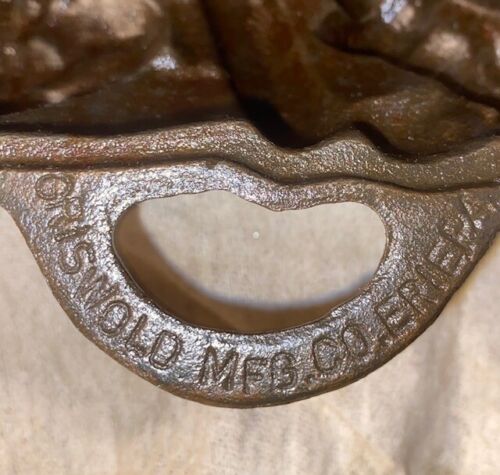
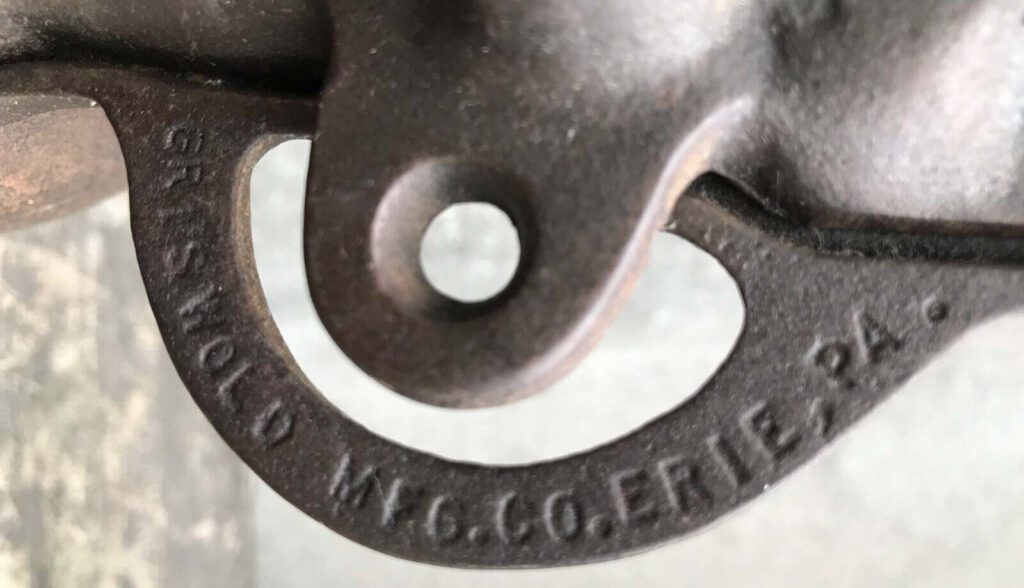
In updating this post for the end of 2024, I ran across a reproduction Santa that was sold on eBay for “Best Offer”, so it sold for something less than $200 (the asking price). You can see from the photos below that the casting is rough, and the text is larger than on an authentic Santa, and runs to the edge of the handle.

The tongue is visible in Santa’s open mouth on the authentic Griswold vintage cast iron cake molds, while the reproduction Santa’s open mouth is smooth.
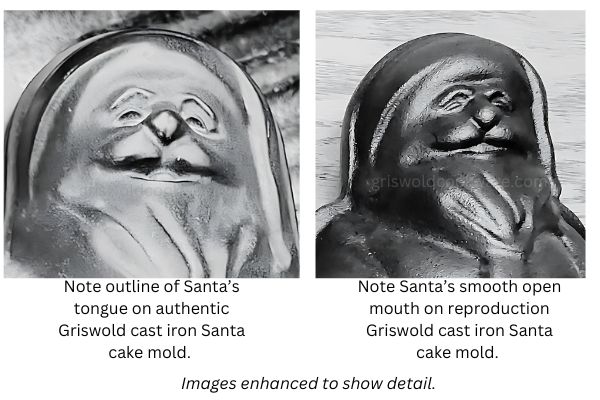
The Line on (some) of Santa’s bags

According to collector Larry O’Neil, Griswold used a wooden pattern to cast their Santa molds. As the wood aged, it dried out and began to crack. As a result, later Santas have a line (where the crack was located in the wood pattern) on Santa’s toy bag – the line can be different lengths. Earlier Santas have a short or non-existent line; later Santas have a longer line. The latest Santas have lines on both sides of the bag.

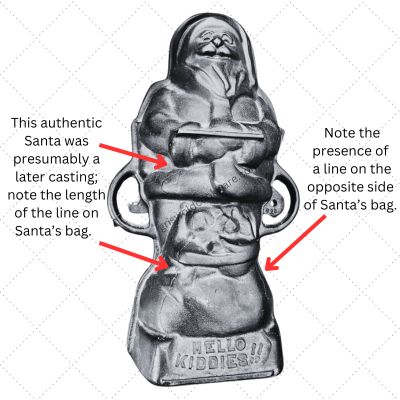
Selling Prices for Authentic Griswold Vintage Cast Iron Santa Molds
Selling prices vary depending on many factors. Some of the factors include scarcity, the precise markings on a piece, condition condition condition, and the seller. A piece may be purchased from a known seller, an online marketplace, an auction, flea market, antique shop, garage sale, estate sale and so on.
In my view, the current “value” of a piece is what the market will bear – i.e. what a person will pay for the piece. 2 To find what a person might pay for a piece, it helps to know the price people have recently paid for a piece with the same markings in the same condition as your piece.
February 13, 2025 Air Works Consignment Auction – $175
The lovely authentic Griswold Santa pictured below brought $175 at the Air Works Consignment Auction in Ohio on February 13, 2025. That price does not include the 7.5% on-site buyer’s premium.

eBay Pricing
One common method to determine the “value” of an item is by checking the prices for similar items that have recently sold on eBay. Keep in mind that the price listed as “asking price” by a seller does not necessarily reflect the true value of the item. An asking price could be unrealistically high or low, or it might be just right. It’s important to distinguish between the asking price and the actual value of the item, which can be found by looking at the prices of items that have already been sold. The value of a piece is what the market will bear.
November 29, 2024 eBay “Sold Price” Search
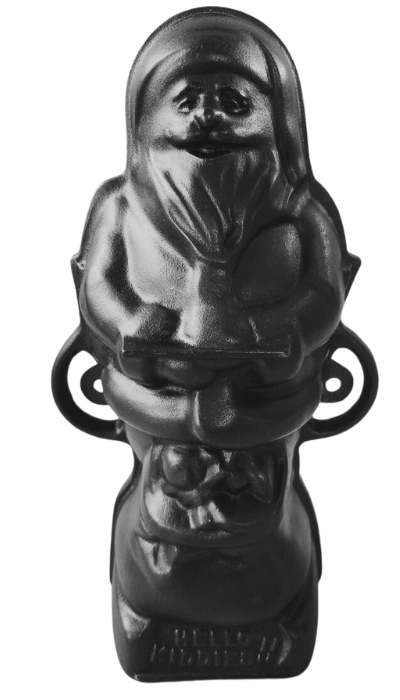
I did a “sold items” search on eBay on November 29, 2024 for “Griswold Santa.” That search revealed that within the preceding 90 days, 15 authentic Santas sold on eBay for between $159 and $425.3 During that same period, 3 reproduction Santas (not identified by the seller as reproductions) sold for between $105.44 and $200. 4

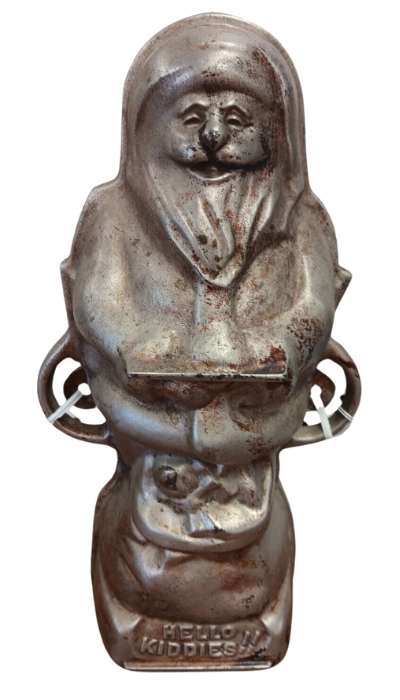
November 12, 2024: $159 plus shipping, $249.99 plus shipping on November 7, 2024, $299.97 plus shipping on November 3, 2024, October 28, 2024 $217 plus shipping, Best Offer October 21, 2024 $249.99 plus shipping, $350 on October 20, 2024, $286 plus shipping on October 1, 2024, $335.99 pl;us shipping on September 15, 2024.
Fake sold October 21, 2024 for $149.99 plus shipping, $105.44 plus shipping on October 19, 2024.
August 23, 2024 Auction Price

At a 2-day cast iron cookware auction held on August 23 and 24, 2024 in Montgomery, Indiana, a lovely authentic cast iron Santa brought $200, not including the auction premium or potential shipping charge.
August 17, 2024 eBay “Sold Price” Search
There were just two Griswold Santa molds that sold on eBay in the 90 days preceding August 17, 2024. Both were authentic. One sold for $190.50, and the second sold for something less than the original asking price of $195.
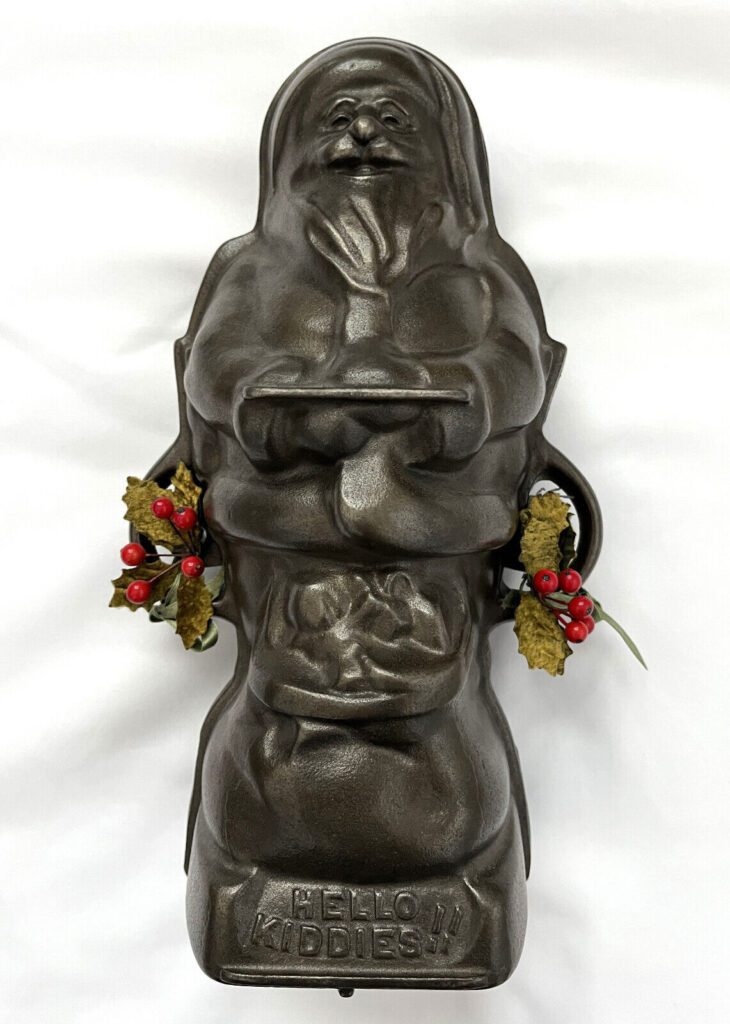
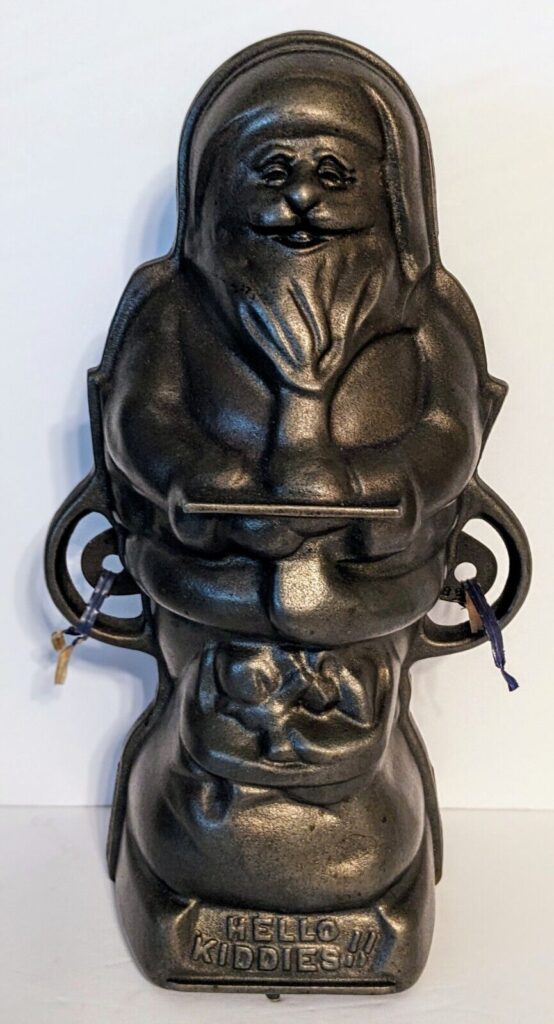
April 4, 2023 eBay “sold price” search
As of April 4, 2023, an authentic Griswold vintage cast iron Santa cake mold sold in the preceding 90 days for:
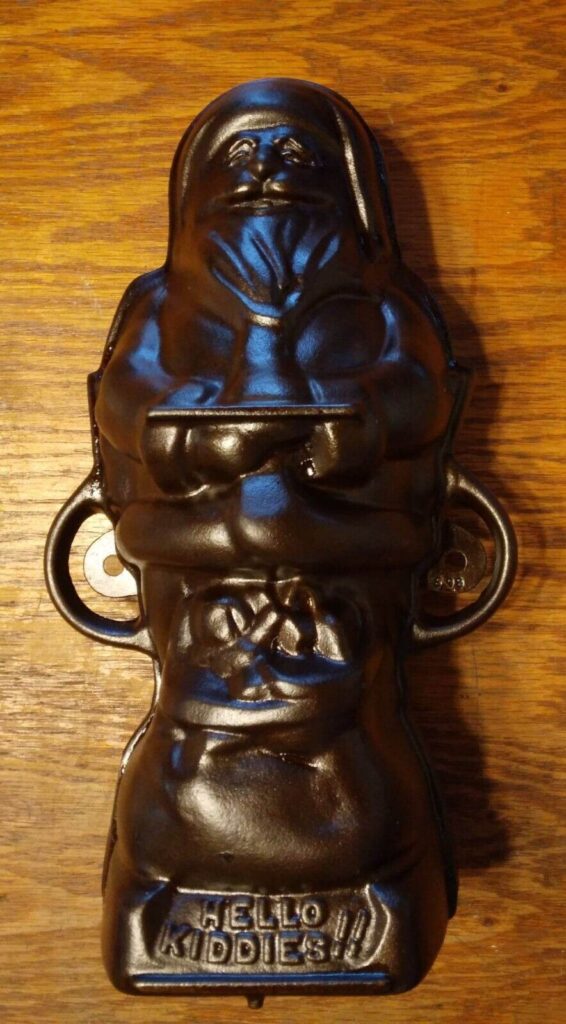
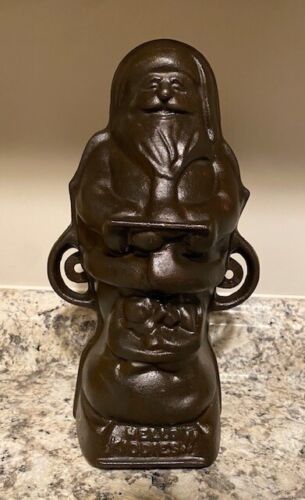
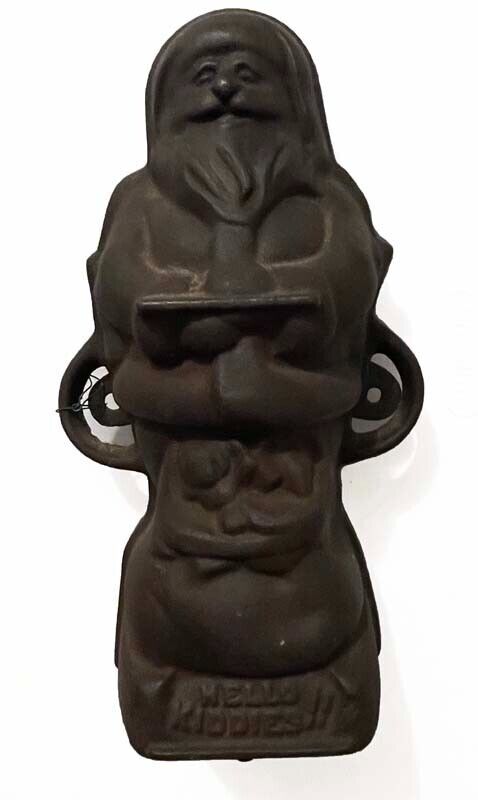
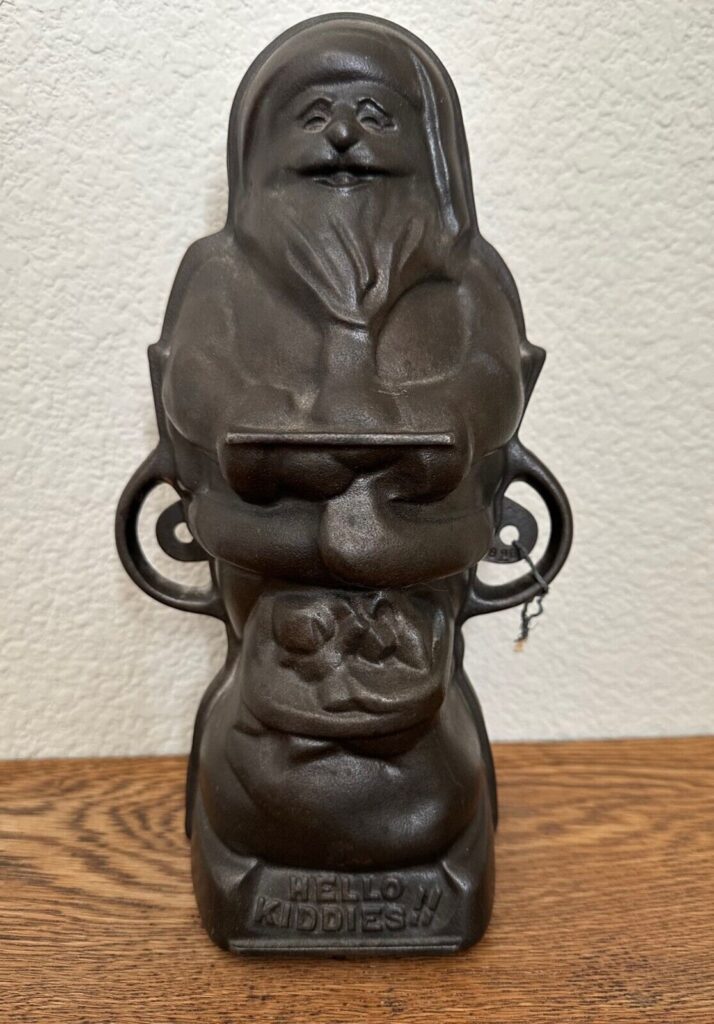
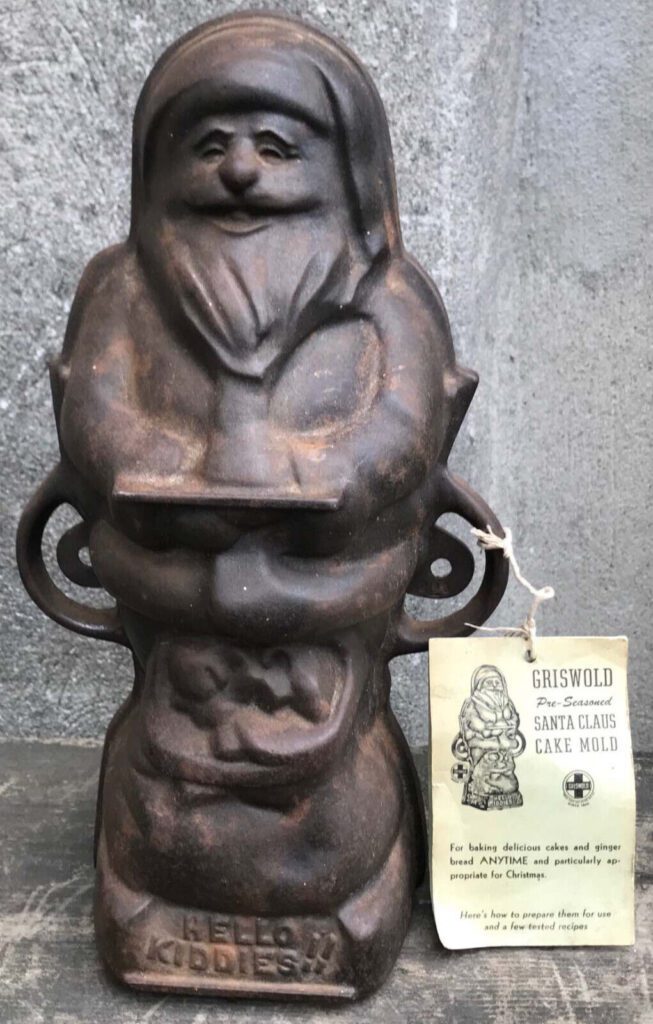
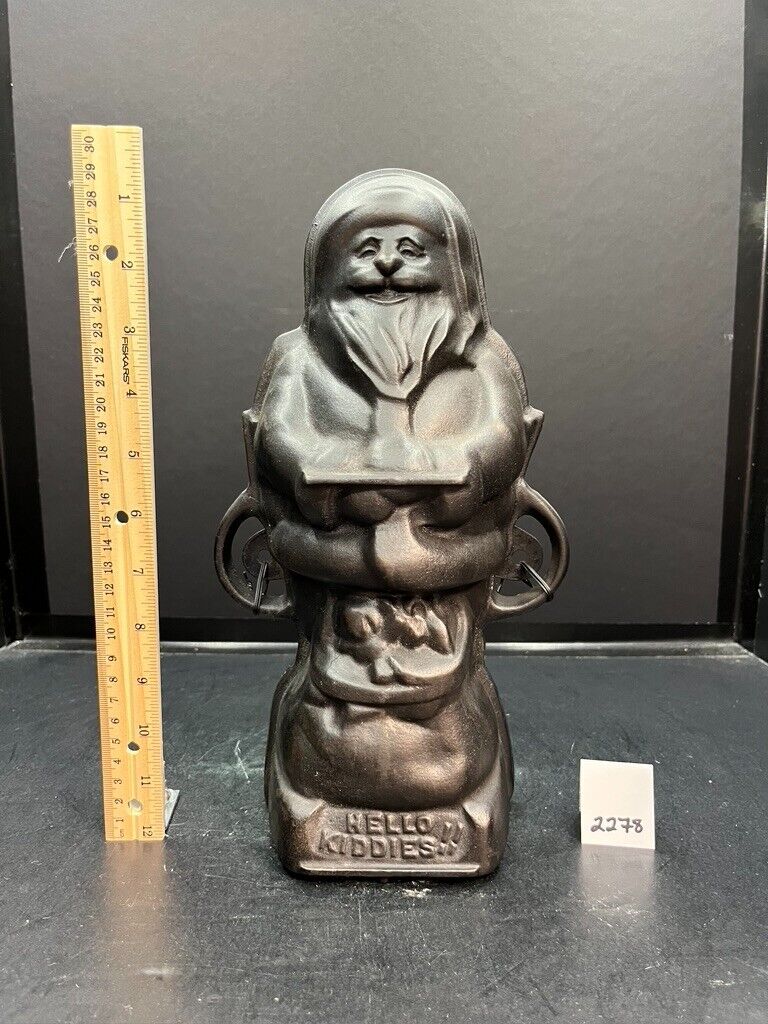
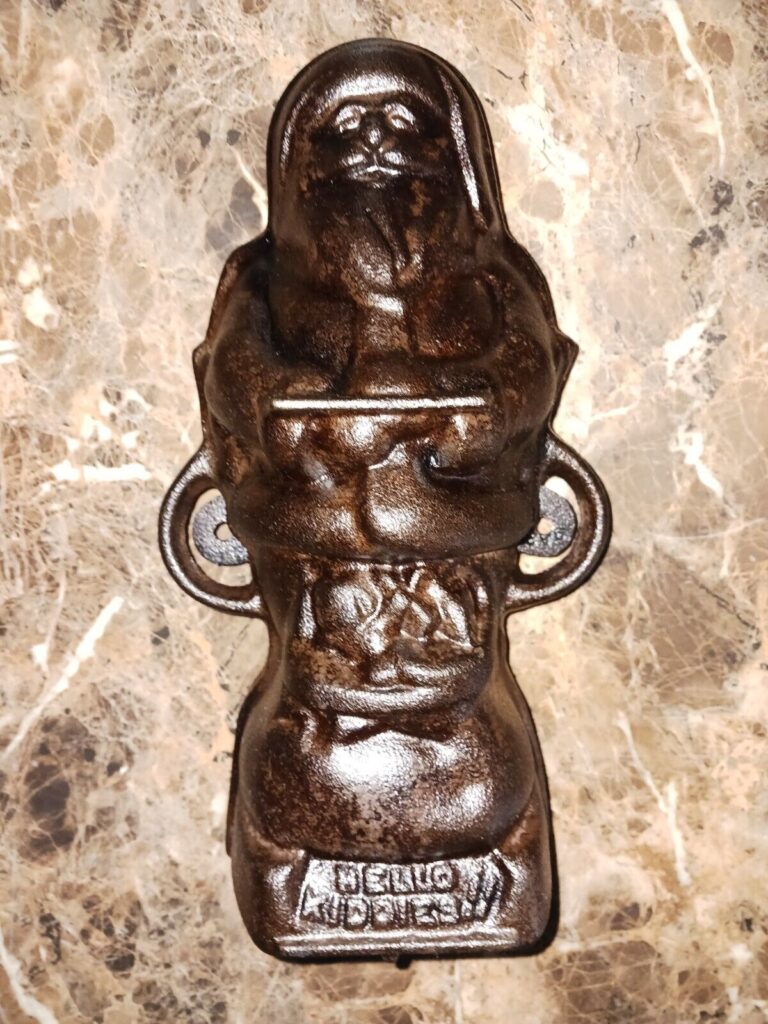
There you have it – now, next time you see a Griswold cast iron Santa cake mold marked at a great price, you’ll be ready to pounce!
(Note: updated February 26, 2025 from the previously published posts)
- If you are interested in learning more about authenticity of Griswold-marked pieces, you might check out my blog posts about vintage cast iron pups marked “Griswold” and skillet racks marked “Griswold.”
- When I was selling, a long-time collector was apparently trying to explain to me why my asking price for something was too high, saying, “but that’s what people will think it is worth!” I thought that was curious. I figured that my asking price was, indeed, what the piece was worth, as it was the price that people actually paid me. If the piece didn’t sell at my asking price, I recognized that it must be set too high and reduced the price until it hit the sweet spot and sold.
- November 12, 2024 – $159 plus shipping, November 7, 2024 – $249.99 plus shipping, November 3, 2024 – $299.97 plus shipping, October 28, 2024 – $217 plus shipping, October 21, 2024 – $249.99 plus shipping, October 20, 2024 – $300, October 1, 2024 – $286 plus shipping, September 15, 2024 – $335.99 plus shipping.
- November 29 – best offer accepted (less than $200), October 21, 2024 – $149.99 plus shipping, October 19, 2024 – $105.44 plus shipping.

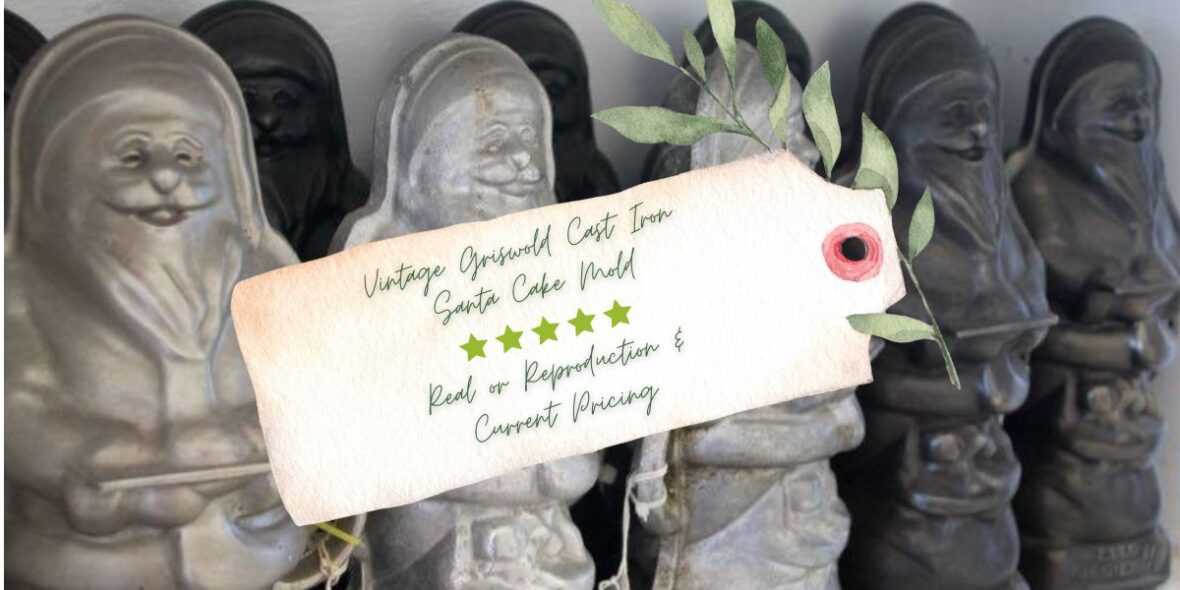
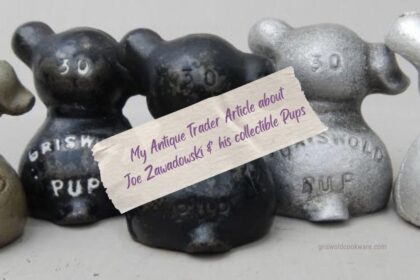


2 Comments
Michelle
September 20, 2024 at 6:20 pmI have a question. Who made the Reproduction Santa’s? I have a Reproduction santa.
Mary
December 23, 2024 at 3:32 pmHi Michelle. I don’t know the answer to this question. Readers, do you?